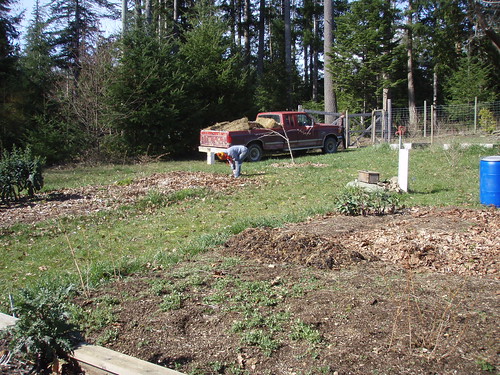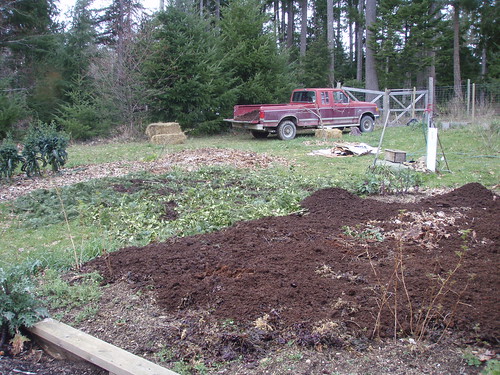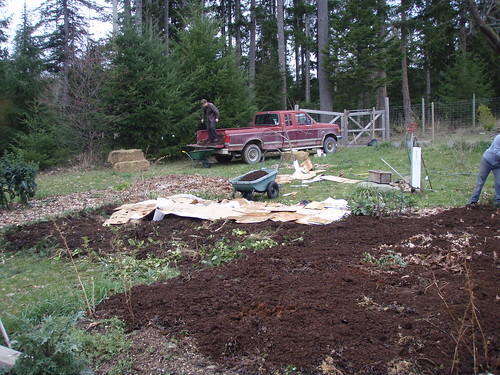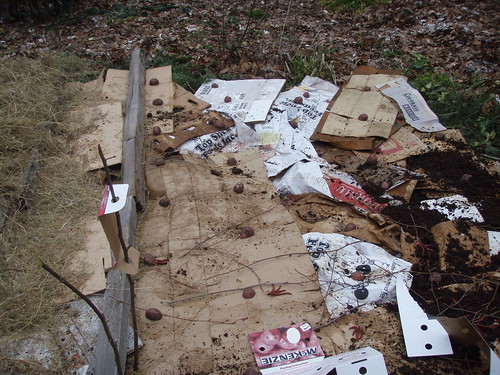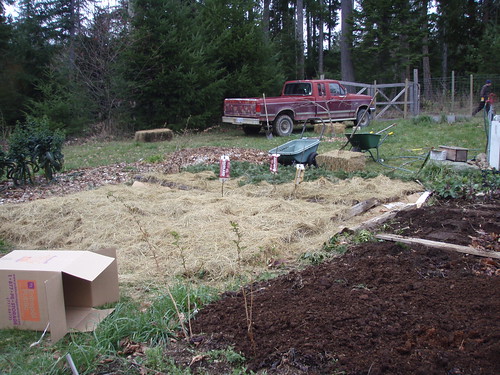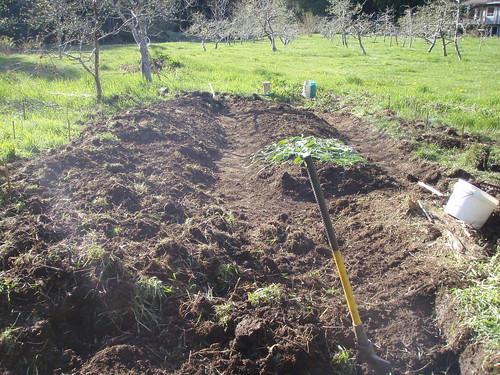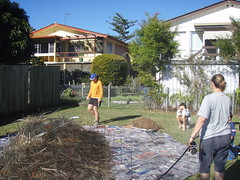As we understand from Chapter 1, permaculture is an ethical system of design that produces a stable and secure place for humans and all other living things. Chapter two is about what inspires us and how the functions of natural systems inform the design process.

What are the principles of natural systems? What are our design directives for sustainable systems? What is a working definition of SUSTAINABLE?
Sustainable: Is Any system which produces and stores enough energy and resources to provide for its ongoing maintenance and reproduction.
Sustainability is about energy and how it is captured, stored, and cycled within a system. Energy is in constant flow and flux moving from one place to another. Energy is always on the move. Energy is all things, continually changing from one form into another: heat, light, water, people, soil, trees, animals, wind, electricity, fuel, sound, cash…et cetera.
In the development of sustainable systems, we almost always need to make a significant investment of energy upfront. Particularly when working in degraded places such as our cities, agricultural lands and clear-cut forests. Permaculture is the design and implementation of systems that produce more resources and energy over their lifetime than was originally expended in their implementation.
produce more resources and energy over their lifetime than was originally expended in their implementation.
This diagram illustrates the basic pattern of the industrial system. It is in constant need of resources and energy input, necessitated by the constant flow of energy and resources out. The waste stream, the net loss, is the most critical component of this system. Without this constant loss there would be no need for a continued consumption and nobody would be making any money.
In the words of Albert Einstein, “we cannot solve problems by using the same kind of thinking we used when we created them.” While there are many great and beneficial things that have come out of the industrial pattern, it is not and never will be a pattern for sustainable society. The concept of the consumer is not part of a sustainable future. We need a different model.
There are no evil doers in this system, it’s just the way it has been designed. By our participation we continue to support this self destructive pattern. The challenge we face is the wholesale re-design of systems with out the necessity of wholesale revolution. We have experimented with bloody revolution in the past and it is not a viable option for the present.
How do we make the shift with elegance and grace?
Ecosystems
This diagram outlining the basic pattern of an ecosystem. Ecosystems use the basic energy inputs of the sun, climate and soil. So long as the sun shines this system will continue to function.
So long as the sun shines this system will continue to function.
The connections between the elements of the system are both direct and indirect exchange of service. There is no free lunch–everything returns. Everything gardens, all species, ourselves included, have an impact. All species play a role in the evolution of the system. We all have a function.
Permaculture focuses on function. It is not diversity alone that generates stability and resilience. There must be functional diversity, a diversity of connections. In truth, the long term survival of a species has nothing to do with competition and brutality. Long term survival is for species that place themselves in most service to the whole. As a species of choice and innovation, we have the unique opportunity to design ourselves into a position of service to all of the natural world. In return we can expect clean air, clean food, clean water, clean communities and long term survival. We may restate the problem as follows:
How do we best become of service to each other and all other things in the biosphere?
Permaculture draws on the themes and principles of ecosystems to assemble endlessly productive and absolutely abundant human habitat. Following the ecosystem model, we have all the information required to design and implement sustainable human habitat.
Permaculture Best Practices:
Design patterns to details.
All we need is to understand the basic patterns of natural systems.
Principles of Natural systems:
• everything is connected to everything else
• every function is supported by many elements
• every element serves many functions
Simple yet profound. Are these principles useful? No. Principles are not very useful. Principles are little more than passive observation. Being people of action, we need directives. We must translate principles into directives.
Permaculture directives for real world design:
• The needs of one element must be met by the yields of another.
• Every critical function must be supported by multiple elements.
• Every element must serve multiple needs.
Our definition of sustainable made use of the term ‘resources.’ Design requires a sound understanding of what a ‘resource’ is and how it functions.
Resources fall into 5 broad categories:
1. Those which increase with modest use (pastures, wood coppice systems)
2. Those unaffected by use (the wind, a view, water used to turn a water wheel)
3. Those that degrade if not used (an annual vegetable crop, information)
4. Those that are reduced by use (fossil fuels, deep aquifers)
5. Those that degrade other resources if used (nuclear power, herbicide, insecticides, artificial fertilizers, weapons)
Design Directives for ethical and sustainable real world design:
• The majority of resources used must come from categories 1, 2 and 3.
• Use category 4 resources modestly to develop resources in categories 1, 2 and 3.
• Avoid category 5 resources at all costs.
Our design implementation options are limited by our current resource set. We cannot spend money we don’t have and we cannot eat food we have not grown. When making decisions about how to invest our resources we must have a very clear path forward. Below is a set of directives that have never let me down. Of course in the world of debt based currency and centralized global distribution networks, we can spend money we do not have and eat food we have not grown. That is why permaculture starts with the ethic. A conscious choice to divest ourselves from a destructive system, while simultaneously investing in the design of productive systems.
Directives for order of Investment :
• First, invest in elements that produce energy and resources
• Second, invest in elements that save on energy and resources
• Third, invest in elements that consume energy and resources
Water is the foundational energy system for all life on the planet. Knowing that fact, as permaculture designers we can follow a very simple set of design priorities.
Directive of Real World Design Priority:
• water
• access
• structures
At the very least follow this progression and you will not go wrong. It does not matter what scale, location, or climate. Always think “water, access, structures”. Water and where it is coming from and where it is going are the most important energy consideration of any design. As much as 40% of all the energy consumed by cities is used to move around water.
To sum it all up, permaculture is really about our first step. If our first move is towards the benefit of living systems, which we are all a part of, all subsequent steps will follow along the same path. With clients it is often the case that they need help knowing where to start. “Here’s our 10 acres… what do we do with it?”
My duty as a permaculture designer is to give the project sustainable direction–a starting point for sustainable and emergent design as the user’s needs, experience and skill set change and develop through time. What it boils down to is energy and how it flows through the design. By examining and understanding the basic patterns of how energy and resources move through an ecosystem we gain the insight and knowledge needed to design sustainable human systems that harmonize with the natural world.
Be sure to check back for the Chapter 3 ‘Methods of Design.’


